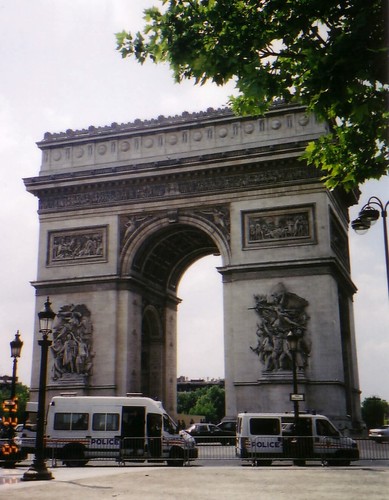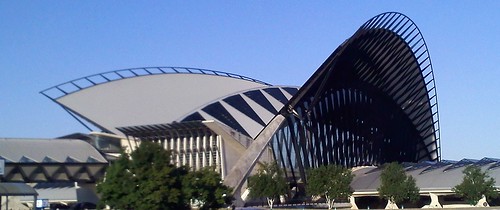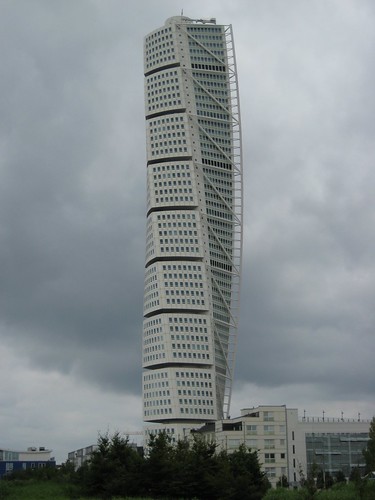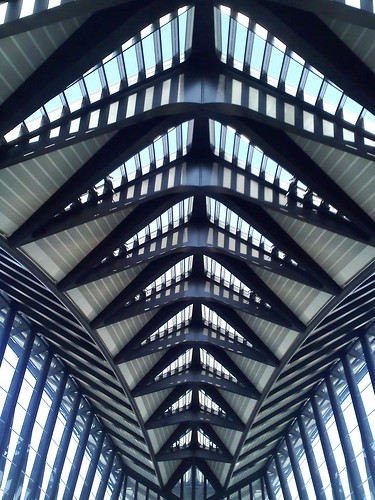 What motivates a property owner, developer or government agency to endeavor to construct a monumental structure - one that they hope will be recognized as an architectural achievement. In part, it's an exercise in egotism similar to the Pharohs' competition to build the most magnificent pyramid or Napoleon's Arc de Triomphe (itself a copy of a fairly common Roman practice). This question is uniquely addressed in The Edifice Complex, a book by Deyan Sedjic. However, immediate tangible benefit is also assumed a byproduct of such structures. The Pharohs improved their chances of ascending to the afterlife and conquerers have long needed symbols of their authority.
What motivates a property owner, developer or government agency to endeavor to construct a monumental structure - one that they hope will be recognized as an architectural achievement. In part, it's an exercise in egotism similar to the Pharohs' competition to build the most magnificent pyramid or Napoleon's Arc de Triomphe (itself a copy of a fairly common Roman practice). This question is uniquely addressed in The Edifice Complex, a book by Deyan Sedjic. However, immediate tangible benefit is also assumed a byproduct of such structures. The Pharohs improved their chances of ascending to the afterlife and conquerers have long needed symbols of their authority.In modern times, the benefit is frequently as simlple as marketing. Landmark buildings can be easier to lease; they can promote tourism to a city or region; they symbolize the strength of the organization.

Increasingly, it seems that spectacular strutures are being designed for infrastructure projects. The crowd-pleasing aesthetic of the cable-stayed bridge has resulted in a quick embrace of this bridge type for long spans. However, this topic entered my mind as I was standing in the train station at the Lyon-St. Exupery airport. Envisioned as a gateway into France's Côte du Rhone and Alpes regions, the complex links the airport to France's high-speed (TGV) rail system.
 The structure was designed by Santiago Calatrava, also famous for the station hall in Lucerne, Switzerland and Turning Torso in Malmö, Sweeden. The structure features two massive fans projecting outward from the center of the structure like the wings of a bird about to take flight. Inside, the resulting structural ribs create an interesting symmetric asthetic - like you're seeing the skeletal structure from within a massive flying creature.
The structure was designed by Santiago Calatrava, also famous for the station hall in Lucerne, Switzerland and Turning Torso in Malmö, Sweeden. The structure features two massive fans projecting outward from the center of the structure like the wings of a bird about to take flight. Inside, the resulting structural ribs create an interesting symmetric asthetic - like you're seeing the skeletal structure from within a massive flying creature. While the use of expressed structure clearly pleases my sense of structural beauty, the other part of my engineer's brain wonders about the cost-benefit analysis of such a structure. Clearly, additional cost was involved. The information boards in the great hall even boast that no two steel segments are identical. Could the function of linking an airport to a train station been achieved more efficiently: yes. Is the additional aesthetic effort worth it? That's a question for the ages.
While the use of expressed structure clearly pleases my sense of structural beauty, the other part of my engineer's brain wonders about the cost-benefit analysis of such a structure. Clearly, additional cost was involved. The information boards in the great hall even boast that no two steel segments are identical. Could the function of linking an airport to a train station been achieved more efficiently: yes. Is the additional aesthetic effort worth it? That's a question for the ages.View more monumental structure on the IABSE Photo Contest of Structure website.
![Reblog this post [with Zemanta]](http://img.zemanta.com/reblog_e.png?x-id=b7b2ea57-7e70-461e-89a8-cb4487d8d468)

No comments:
Post a Comment